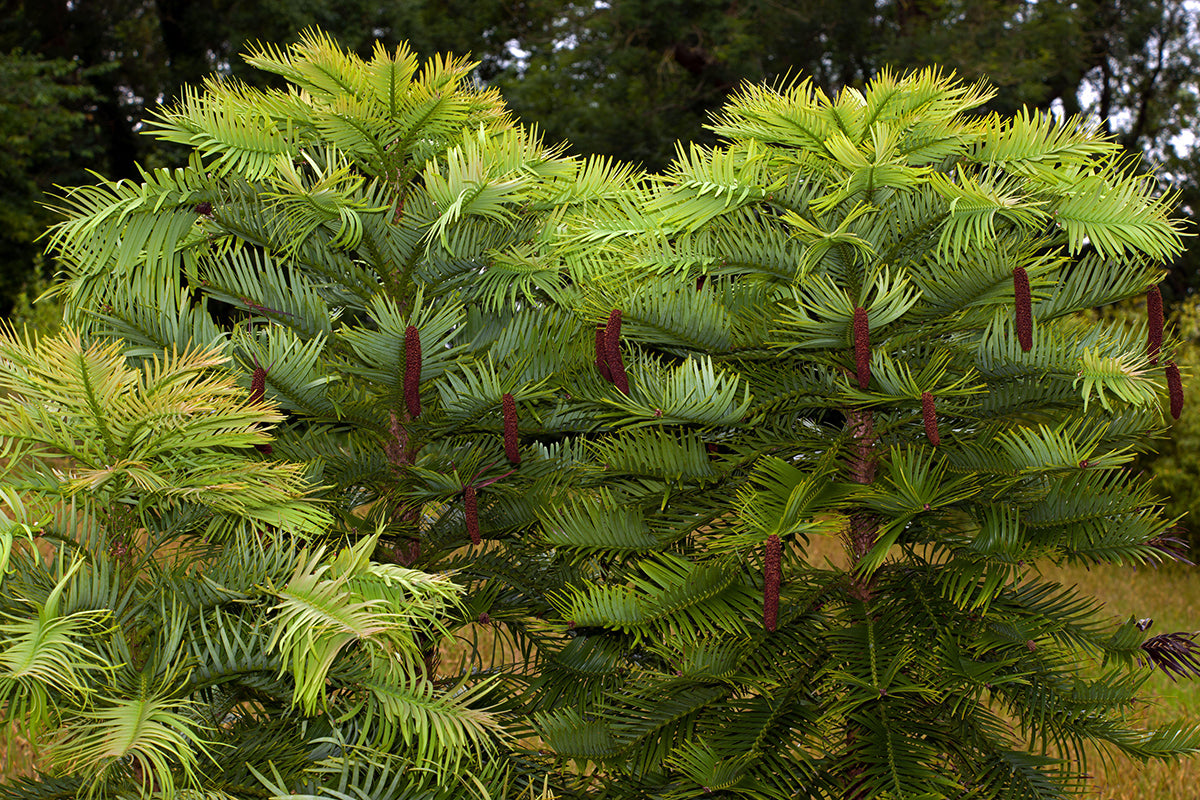Exceptional trees - Wollemi pine

The Wollemi Pine (Wollemia nobilis) is probably one of the most exciting botanical discoveries of the 20th century. Endemic to Australia this conifer was unknown to science until 1994, when a chance exploration in the rugged Wollemi National Park revealed its existence. Two million year old fossil specimens were the only previous records.
Taxonomically classified within the Araucariaceae family (Monkey Puzzles), fewer than 60 mature trees exist in their natural habitat, and are concentrated in a few closely situated, steep-sided sandstone gorges 150 kilometres north-west of Sydney.
The population exhibits little variation and scientists believe the species survived a critical genetic bottleneck between 10,000 and 26,000 years ago. Genetic testing suggests that the entire wild population may have been reduced to just one or two individual trees, a circumstance that makes its survival particularly remarkable.
Mature trees reach 25-40 meters in height, with an unusual bark texture that is dark brown and knobbly. It grows in an unusual way with side branches rarely producing secondary growth, instead terminating in male or female cones before dying back. New growth emerges from epicormic buds on the main trunk.
To secure survival a recovery plan was put together, involving careful propagation and distribution of genetic material. Botanical gardens worldwide now maintain Wollemi Pine collections, and a commercial propagation programme has rapidly made these trees available to all.
Perhaps surprisingly, the species has demonstrated remarkable adaptability and despite its narrow wild habitat Wollemi Pines have successfully grown in a wide range of climatic conditions tolerating temperatures from -12°C to 45°C. The tree now thrives in locations as varied as Scotland, Japan, and the United States.
It’s hard to believe that over 30 years ago the existence of this tree was unknown. Here we are three decades later and the tree is available to purchase from a wide range of plant nurseries throughout the U.K. Though prices for specimens of this tree are high there seems to be plenty of gardeners willing to add this living fossil to their collection.







